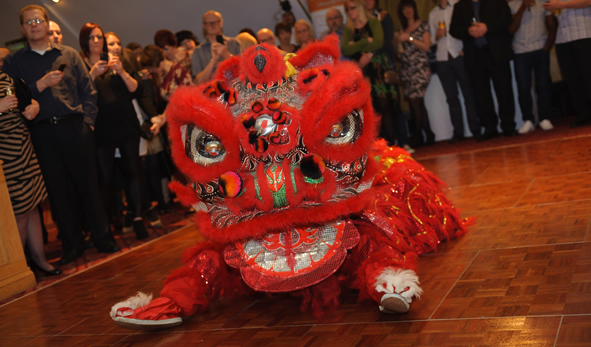You have probably seen lion dances at Chinese New Year. Two men inside a lion costume performing acrobatic movements to the crashing of cymbals and the banging of drums. In fact the lion dance forms a part of many Chinese festivals and special occasions such as weddings and even the opening of businesses and restaurants. By way of an example anyone attending the recent BKFA 30th Anniversary celebrations will have been treated to a lion dance.

The main reason the dance is performed is that it is said to ward off evil and bring good fortune. To aid in this process it is typical for loud fire crackers (rather like strings of 'bangers') to be lit. This is less common in the UK because of legal, health and safety issues surrounding their use.
Lion dancing is physically demanding requiring agility and, when practiced at its highest form, acrobatic ability. Kung fu clubs have long been associated with lion dancing as the lion dance incorporates various kung fu derived stances, kicks and other footwork in its routines. Of course kung fu practitioners should also have the physical attributes required to manipulate the heavy lion's head which can be surprisingly heavy and difficult to use.
Just as demanding is the tail of the lion which necessitates that the practitioner be bent over for long periods of time. The person playing the lion's tail can also serve as a base for the person manipulating the head to stand on adding to the demands of playing that role. At its highest level lion dancing is similar to sports acrobatics in that the tail forms the base for the top or head to balance on. Balances can be performed standing or even running between poles high above the ground.
There is another reason why the lion dance is so closely associated with kung fu clubs. In traditional clubs the students did not pay a fee. Instead, the club raised all its funding for the year by competing in special lion dancing competitions held during the Chinese New Year.
Even today the skill of the kung fu club's lion dancers serves to show the club's spirit and the team's ability to perform an impressive lion dance is a matter of pride and is taken very seriously.